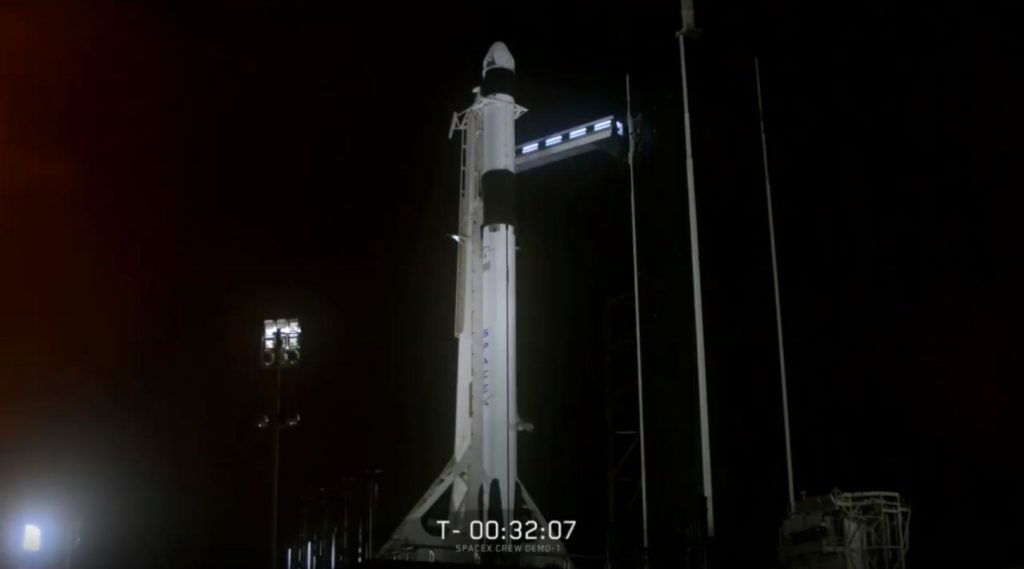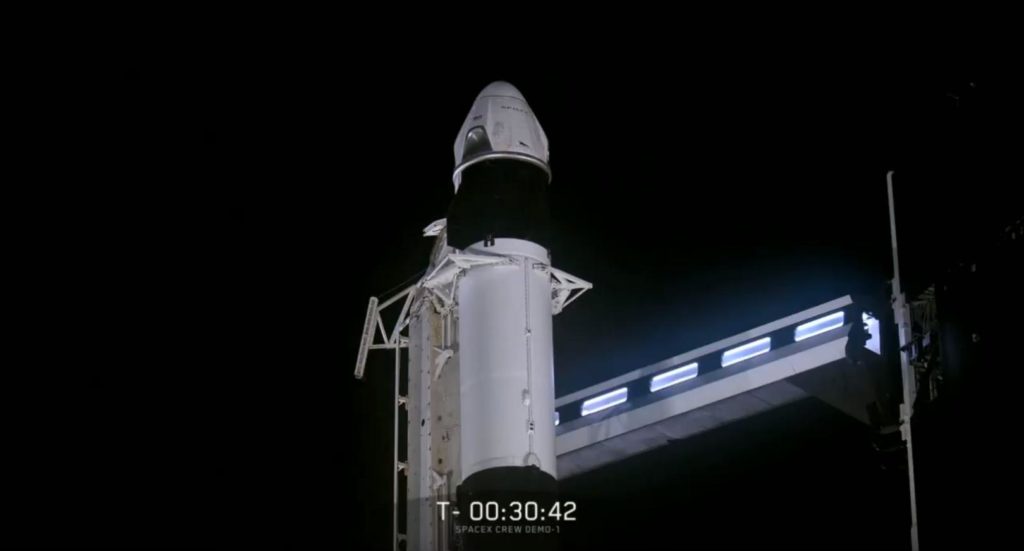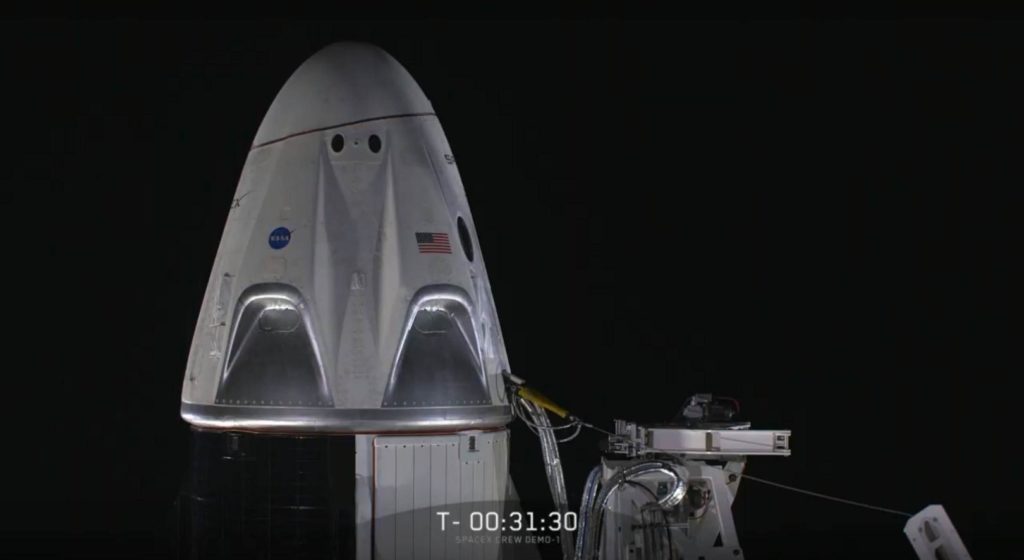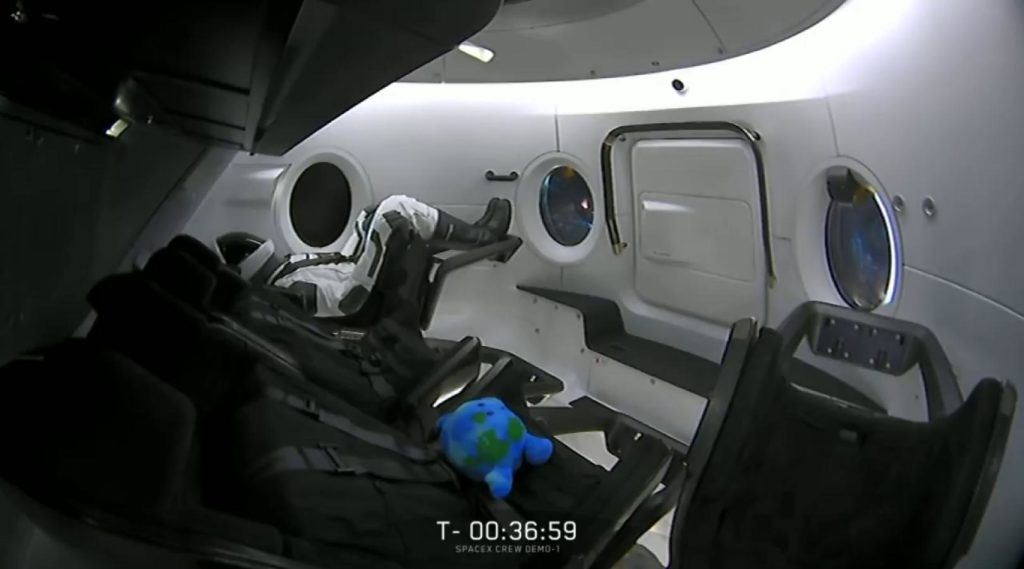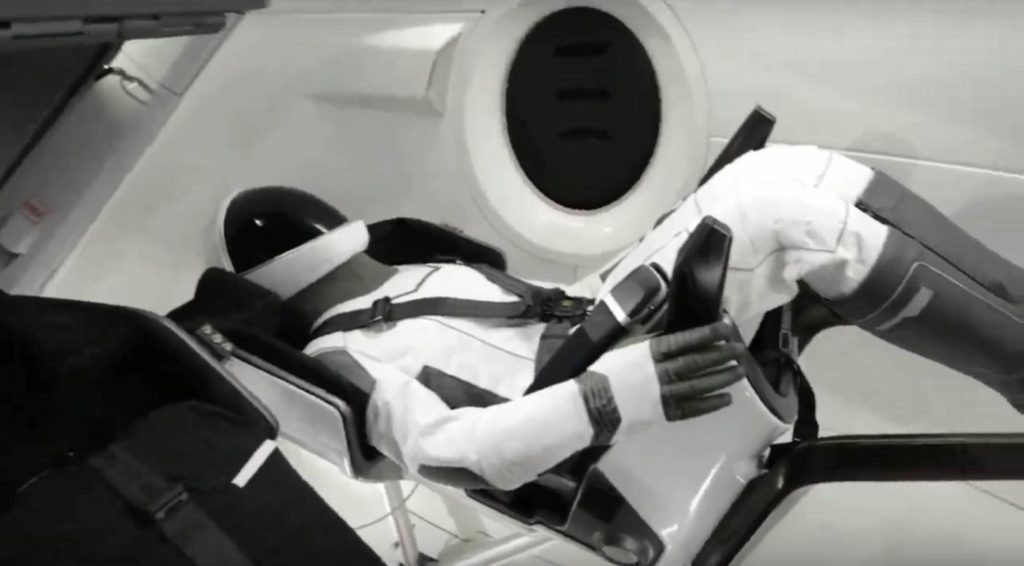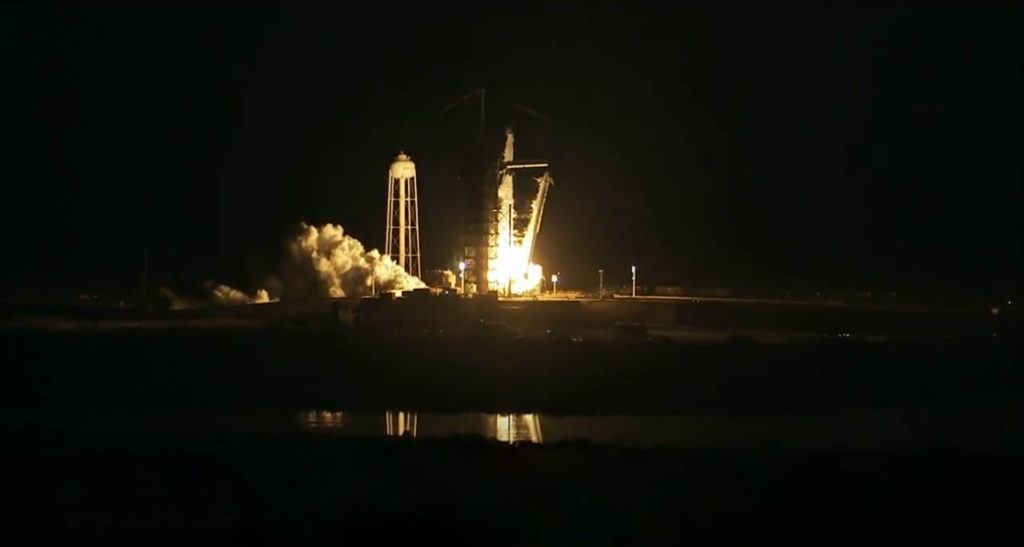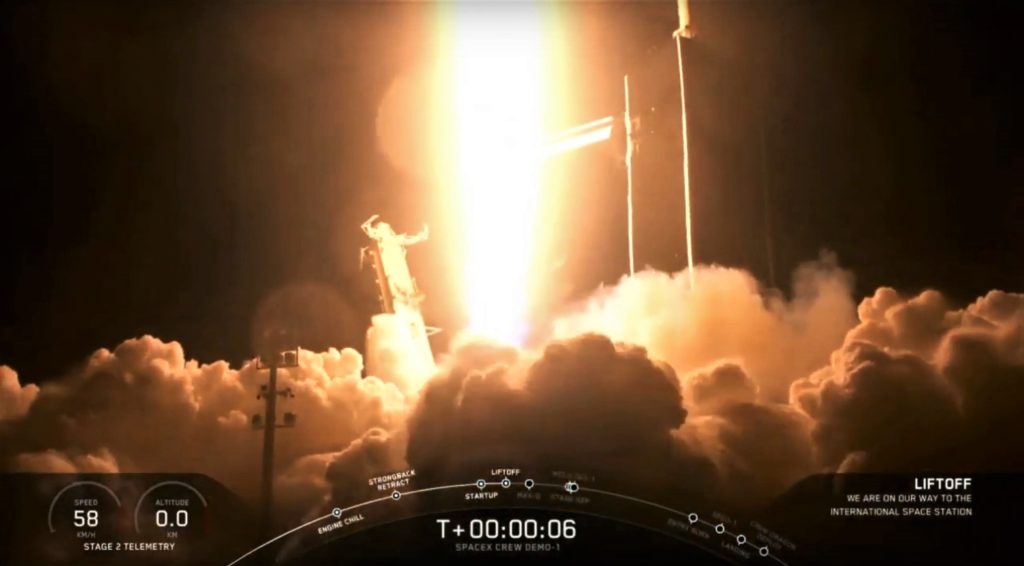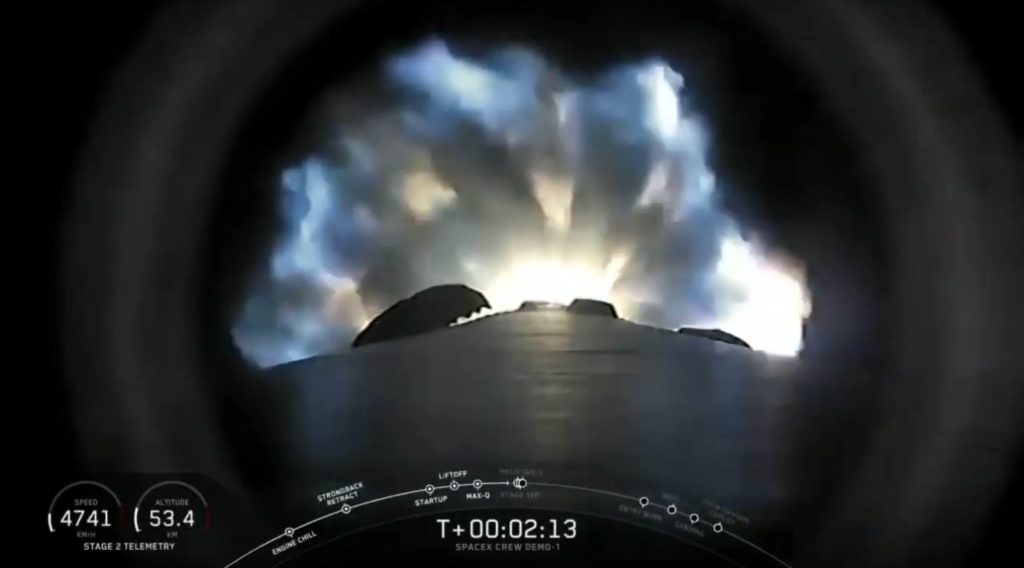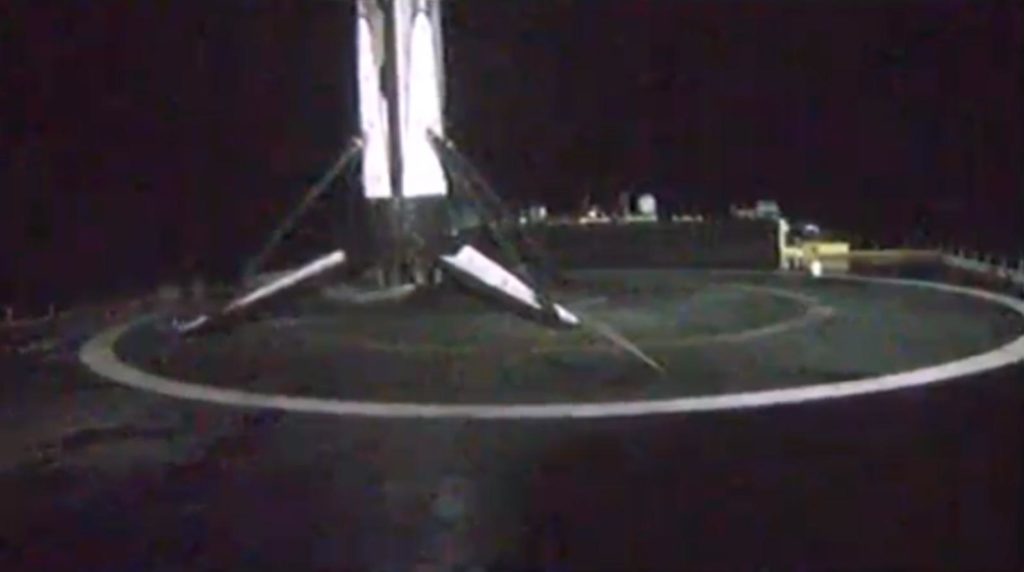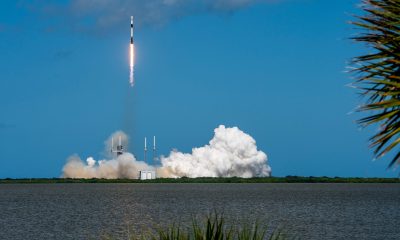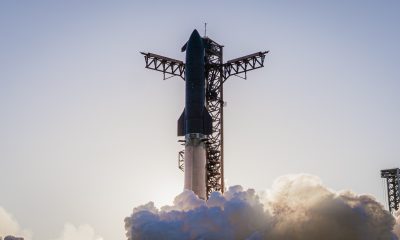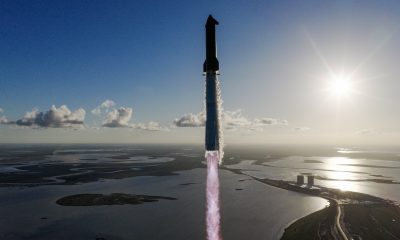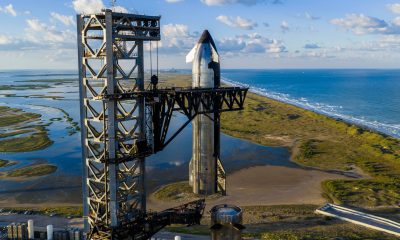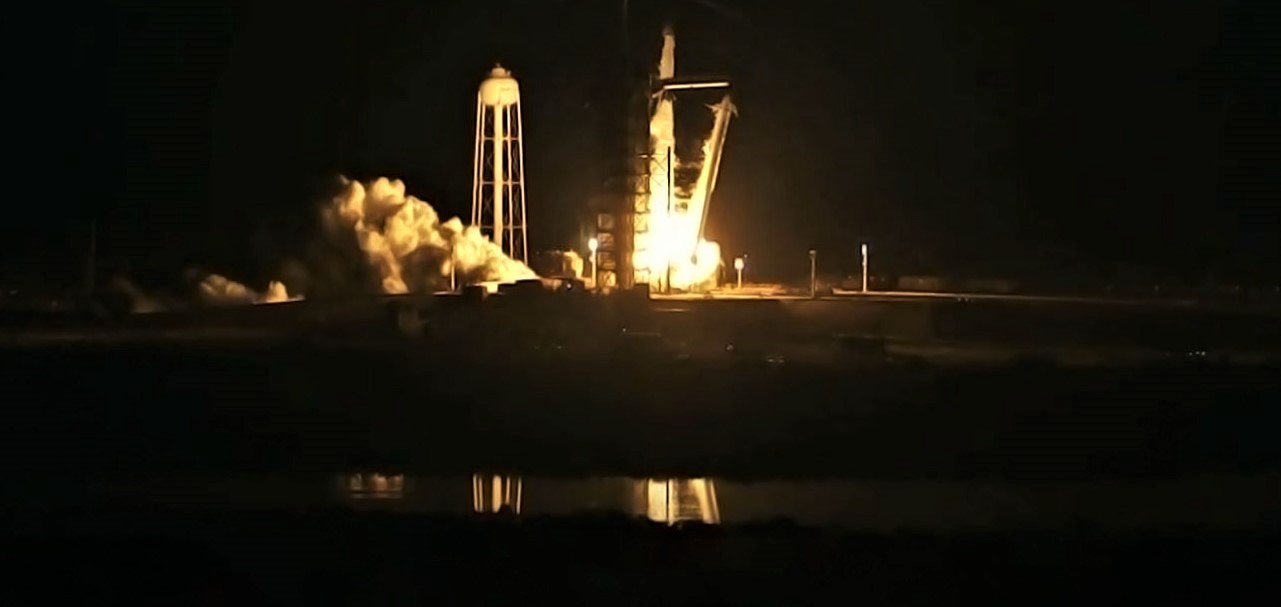
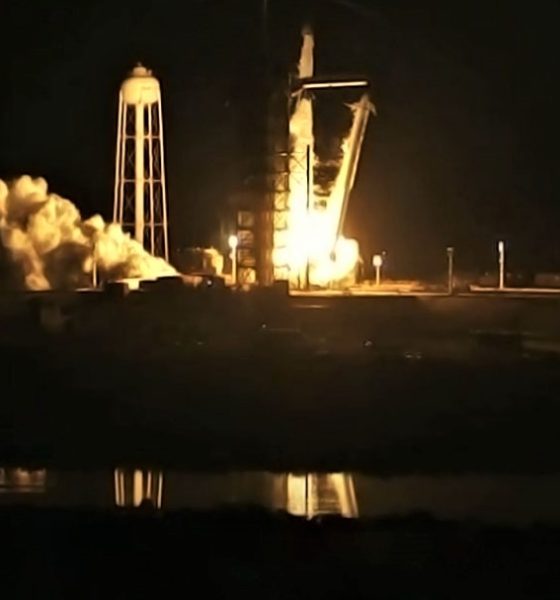
SpaceX
SpaceX’s Crew Dragon one step closer to human spaceflight after flawless launch
SpaceX has completed the first half of its critical Crew Dragon test flight, launching the brand new spacecraft into low Earth orbit (LEO) on the back of one of its workhorse Falcon 9 rockets. The rocket performed nominally, successfully sending the human-rated vehicle on its way towards the International Space Station (ISS).
Scheduled to dock with the ISS as early as 6 am EST (13:00 UTC) March 3rd, Crew Dragon will now face the real challenge of this demonstration mission, successfully operating in orbit and autonomously docking with the ISS. Along the way, SpaceX will be flight-testing a number of technologies and systems new to the company, while also providing reams of data that will help both SpaceX and NASA determine whether Crew Dragon performed as intended and is truly ready to carry astronauts into orbit.
https://twitter.com/_TomCross_/status/1101764440800878593
While this successful launch is a critical milestone for DM-1, Crew Dragon, SpaceX, and NASA, it’s hard to say there is anything particularly shocking about its successful completion. Including this launch, SpaceX has now successfully launched Falcon 9 42 times in a row since January 2017, including seven orbital launches and ISS missions with Cargo Dragon, a heavily proven spacecraft with 16 successful missions since its 2012 debut. Put simply, SpaceX has an incredibly dense volume of experience successfully launching, landing, recovering, and refurbishing orbital-class rockets and spacecraft, as well as a proven track record of success and an ability to confront and move past challenging vehicle failures.
Crew Dragon demo mission (DM-1) is set to launch early tomorrow morning, March 2, at 2:49 a.m. EST from Kennedy Space Center. What an absolutely breathtaking scene at LC-39A. #spacex #nasa #CrewDragon #falcon9 pic.twitter.com/T95wCumGzq
— Pauline Acalin (@w00ki33) March 1, 2019
Crew Dragon’s successful launch is no less of a major achievement, even if it was about as much of a known quantity as any other Falcon 9 mission. The real challenge ahead of the spacecraft is successfully demonstrating the efficacy of its design and operations in space, particularly while interacting and docking with the ISS. Prior to tomorrow morning, all SpaceX Dragons have berthed with the ISS, meaning that they effectively come up from underneath the ISS (a lower orbit), stop a few meters away, and are ‘grappled’ by a large robotic arm (known as Canadarm2) that also attaches the spacecraft to a docking port. If – at any point during the pre-berthing approach – Cargo Dragon were to lose control, the spacecraft would essentially fall back down the gravitational hill it had just climbed, a built-in abort that would nominally prevent the spacecraft from impacting the Station in most failure scenarios.
The launch of Crew Dragon demo (DM-1) as seen from the roof of NASA’s Vehicle Assembly Building. What a powerful and moving mission. Another step closer! #spacex #nasa #CrewDragon pic.twitter.com/aWIPtDcVir
— Pauline Acalin (@w00ki33) March 2, 2019
Crew Dragon, on the other hand, has been designed to dock with the ISS. Generally speaking, this means that the spacecraft will approach the Station side-on, as if it were a car accelerating faster than another car in the same ‘lane’. While there are many built-in points during the docking approach where Crew Dragon will halt all forward movement, the differing docking approach means that any loss of control or contact while on a vector towards the ISS could mean that it is unable to abort, significantly increasing the likelihood of an impact event in worst-case scenarios. While Crew Dragon is designed with extreme redundancy and fault-tolerance in mind, the stakes are definitively higher compared to Cargo Dragon.
Liftoff of Dragon 2 at 2:49am! SpaceX’s first flight of their new capsule preparing to take astronauts back to the International Space Station from American soil.
See the full launch gallery and support NASAspaceflight by subscribing to L2: https://t.co/whUFQd0FNU pic.twitter.com/TIhJxCSM8j
— Brady Kenniston (@TheFavoritist) March 2, 2019
Conscious of this fact, the new spacecraft will be tasked with completing a significant number of on-orbit maneuvers to verify nominal performance before allowing the autonomous vehicle to attempt a docking with the ISS. While that docking attempt is scheduled to occur as early as 6 am EST (13:00 UTC), live coverage – hosted by both NASA and SpaceX – will begin around 3:30 am EST (10:30 UTC) on Sunday, March 3rd. While these on-orbit webcasts can admittedly be rather dry compared to the thrill of launch, it will arguably be the most significant and mission-critical portion of Crew Dragon’s launch debut, alongside the spacecraft’s safe reentry and Atlantic Ocean landing and recovery. Follow along live at spacex.com/webcast.
Check out Teslarati’s newsletters for prompt updates, on-the-ground perspectives, and unique glimpses of SpaceX’s rocket launch and recovery processes!
News
SpaceX opens up free Starlink service for those impacted by Hurricane Melissa
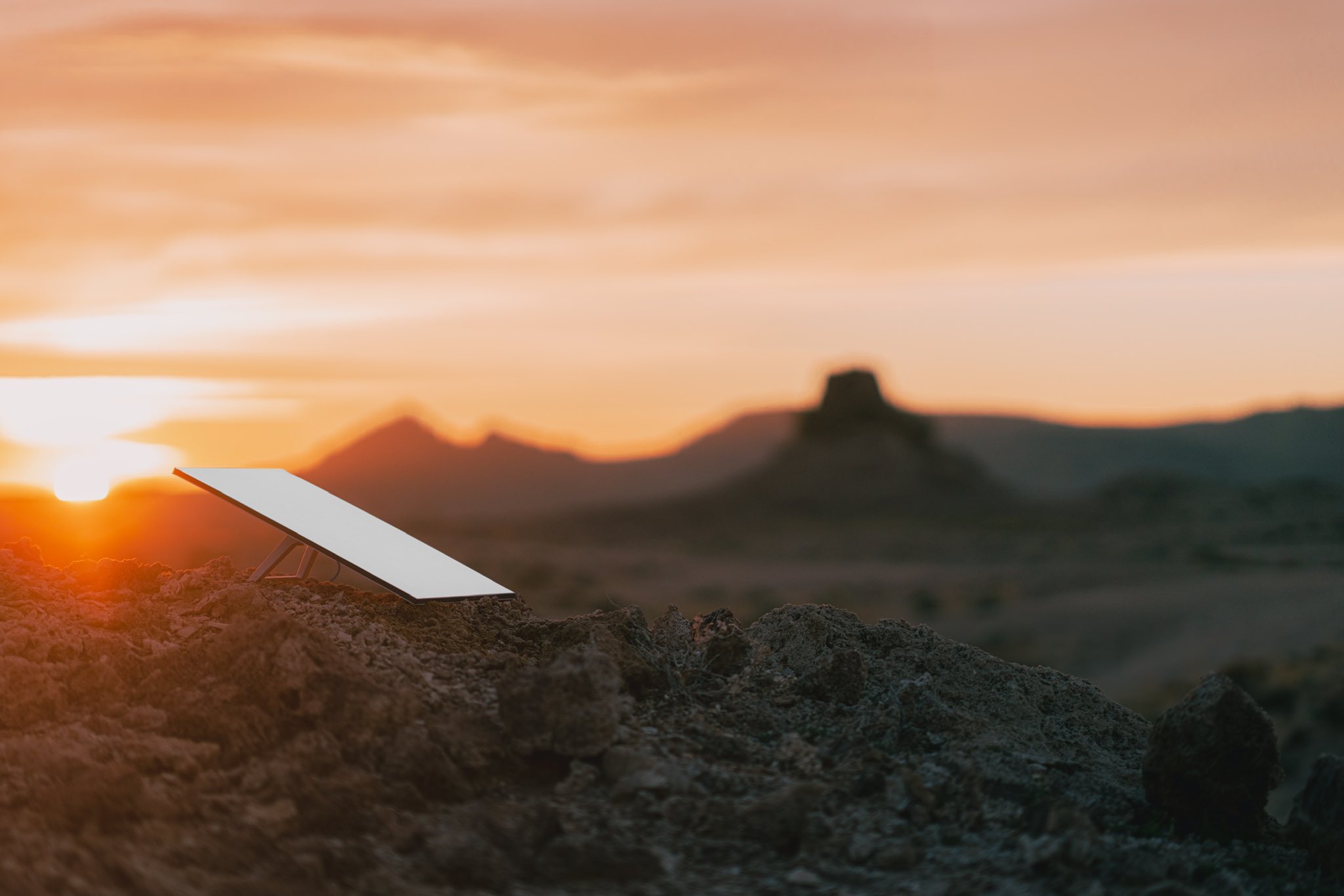
SpaceX is opening up its internet service, Starlink, to those impacted by Hurricane Melissa, as it made landfall in Jamaica and the Bahamas as a Category 5 storm.
Hurricane Melissa is expected to reach wind speeds of over 165 MPH over the next few days as it extends out into the Atlantic Ocean by Thursday and Friday.
Satellite imagery shows Hurricane #Melissa‘s growth from its formation on October 21 to a Category 5 hurricane through October 27, 2025. #HurricaneMelissa pic.twitter.com/goR3Hbgb9c
— The Weather Network (@weathernetwork) October 27, 2025
Citizens in Jamaica and the Bahamas have been preparing for the storm for the past week, getting necessary goods together and preparing for the massive storm to arrive. It finally did yesterday, and the first images and video of the storm are showing that it could destroy many parts of both countries.
Starlink is now being opened up for free until the end of November for those impacted by the storm in Jamaica and the Bahamas, SpaceX announced today:
For those impacted by Hurricane Melissa in Jamaica and the Bahamas, Starlink service is now free through the end of November to help with response and recovery efforts → https://t.co/fUko3xSviJ
— Starlink (@Starlink) October 28, 2025
It is a move similar to the one the company made last year as Hurricane Helene made its way through the United States, destroying homes and property across the East Coast. SpaceX offered free service for those impacted by the destruction caused by the storm.
The free Starlink service was available until the end of 2024.
Elon Musk’s companies have also made similar moves to help out those who are impacted by natural disasters. Tesla has offered Free Supercharging in the past, most notably during the California wildfires.
Tesla and SpaceX’s LA fire relief efforts: Cybertrucks, free Starlink and more
One major advantage of Starlink is that it is available for use in situations like this one, where power might be required to operate things like a modem and router.
Internet access is a crucial part of survival in these situations, especially as it can be the last leg some stand on to get in touch with emergency services or loved ones.
News
SpaceX reaches incredible Starlink milestone
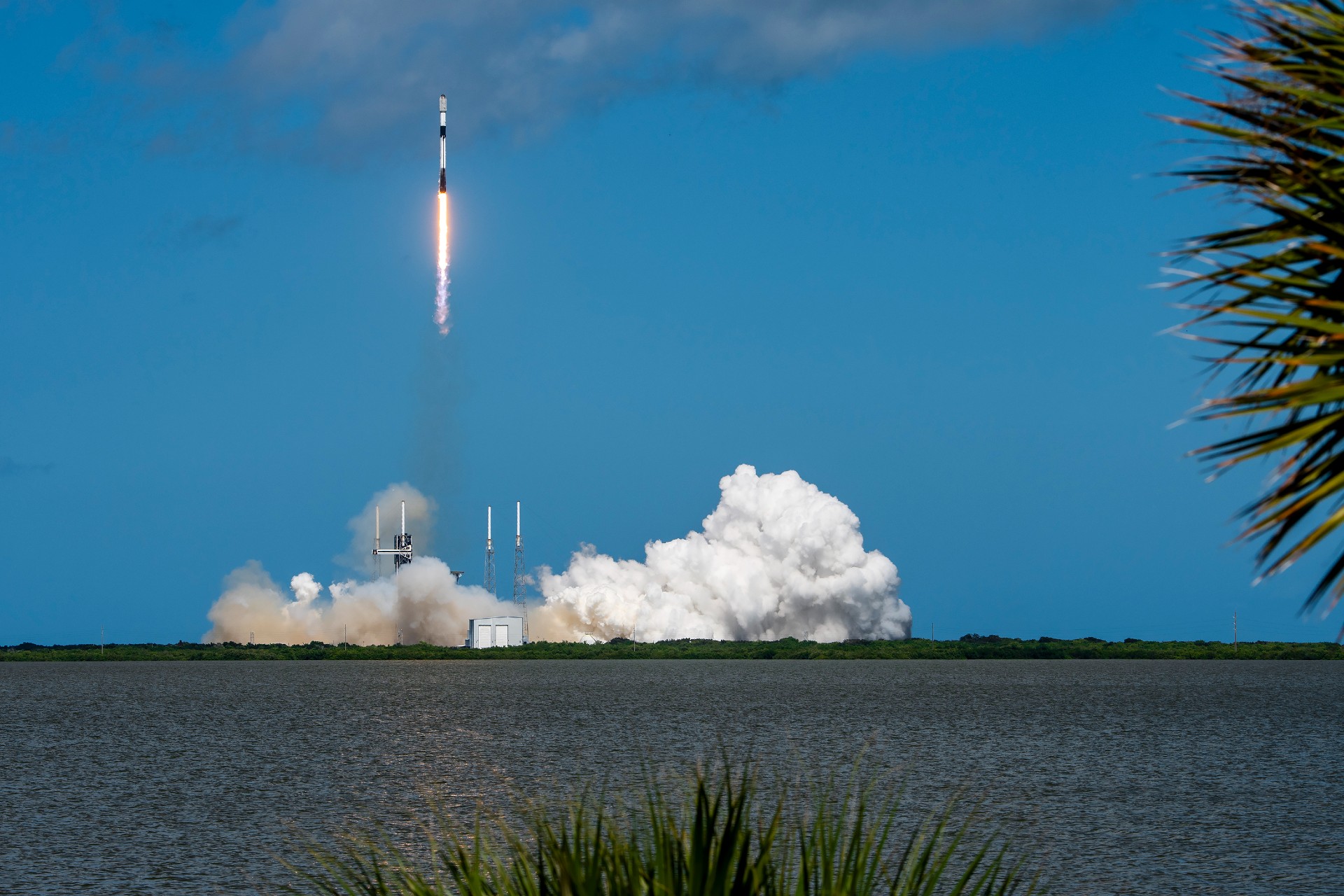
SpaceX has reached an incredible milestone with its Starlink program, officially surpassing 10,000 satellites launched into low Earth orbit since starting the program back in 2019.
Last Sunday, October 19, SpaceX launched its 131st and 132nd Falcon 9 missions of 2025, one from Cape Canaveral, Florida, and the other from Vandenberg, California.
The 10,000th Starlink satellite was aboard the launch from California, which was Starlink 11-19, and held 28 v2 mini optimized satellites.
The achievement was marked by a satellite tracker developed by Jonathan McDowell.
🚨 With its Falcon 9 launch last Sunday, SpaceX officially has 10,000 Starlink satellites in orbit pic.twitter.com/xS5RVZ4ix0
— TESLARATI (@Teslarati) October 26, 2025
The first Starlink launch was all the way back on May 23, 2019, as SpaceX launched its first 60 satellites from Cape Canaveral using a Falcon 9 rocket.
Of the over 10,000 satellites in orbit, the tracker says 8,608 are operational, as some are intentionally de-orbited after becoming faulty and destroyed in the atmosphere.
SpaceX has truly done some really incredible things during its development of the Starlink program, including launch coverage in a global setting, bringing along millions of active subscribers that use the service for personal and business use, locking up commercial partnerships, and more.
Starlink currently operates in around 150 countries, territories, and markets and is available at least somewhere on all seven continents.
Additionally, Starlink has over 5 million subscribers worldwide, and 2.7 million have joined the program over the past year. It has revolutionized internet access on commercial aircraft as well, as several high-profile airlines like Qatar and United, among many others, have already installed Starlink on some of their planes to deliver more stable connectivity for passengers and crew.
SpaceX has the approval to launch 12,000 Starlink satellites from the FAA, but it plans to bring over 30,000 to its constellation, giving anyone the ability to have access to high-speed internet.
Elon Musk
SpaceX posts Starship booster feat that’s so nutty, it doesn’t even look real
The Super Heavy booster’s feat was so impressive that the whole maneuver almost looked like it was AI-generated.
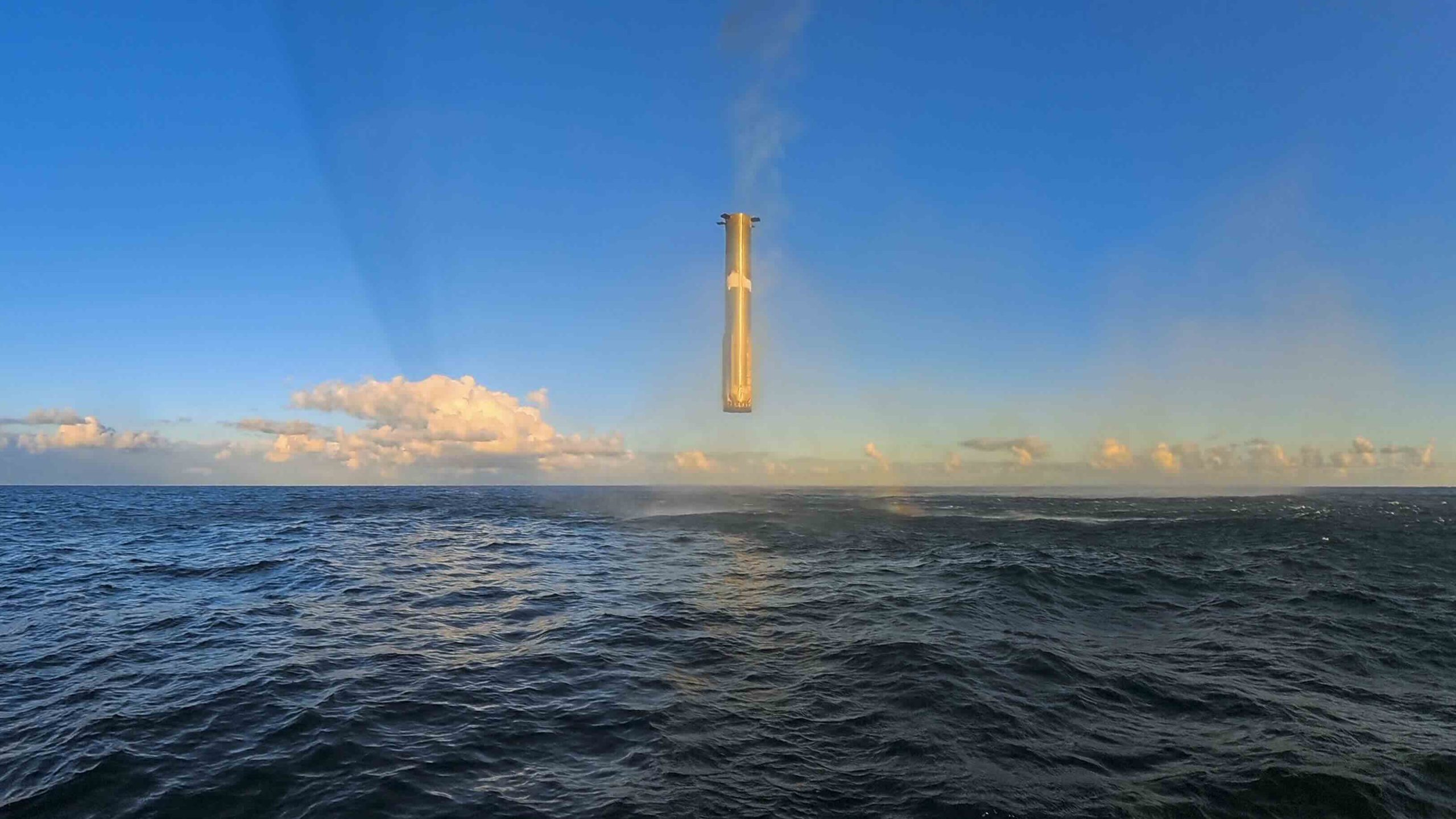
SpaceX has shared a video of a remarkable feat achieved by Starship’s Super Heavy booster during its 11th flight test.
The Super Heavy booster’s feat was so impressive that the whole maneuver, which was captured on video, almost looked like it was AI-generated.
Super Heavy’s picture perfect hover
As could be seen in the video shared by SpaceX, Starship’s Super Heavy booster, which is nearly 400 feet tall, smoothly returned to Earth and hovered above the Gulf of America for a few seconds before it went for its soft water landing. The booster’s picture-perfect maneuver before splashing down all but capped a near-flawless mission for Starship, which is about to enter its V3 era with Flight 12.
The booster’s balance and stability were so perfect that some users on X joked that the whole thing looked AI-generated. Considering the size of Super Heavy, as well as the fact that the booster was returning from space, the hovering display all but showed that SpaceX is dead serious about keeping its dominant lead in the spaceflight sector.
Starship V2’s curtain call
As noted in a Space.com report, Flight Test 11 achieved every major goal SpaceX had set for the mission, including deploying Starlink mass simulators, relighting Raptor engines in space, and executing a stable reentry for both the Starship Upper Stage and the Super Heavy booster. The feat also marked the second time a Super Heavy booster has been reflown, a milestone in SpaceX’s quest to make the entire Starship system fully reusable.
Starship’s V2 vehicle will now give way to the upgraded Starship V3, which is designed for faster turnaround and higher payload capacity. The Starship program is expected to pursue even more aggressive targets in the coming months as well, with Elon Musk stating on social media platform X that SpaceX will attempt a tower catch for Starship Upper Stage as early as spring 2026.
-

 Elon Musk2 weeks ago
Elon Musk2 weeks agoSpaceX posts Starship booster feat that’s so nutty, it doesn’t even look real
-

 Elon Musk2 weeks ago
Elon Musk2 weeks agoTesla Full Self-Driving gets an offer to be insured for ‘almost free’
-

 News2 weeks ago
News2 weeks agoElon Musk confirms Tesla FSD V14.2 will see widespread rollout
-

 News2 weeks ago
News2 weeks agoTesla is adding an interesting feature to its centerscreen in a coming update
-

 News2 weeks ago
News2 weeks agoTesla widens rollout of new Full Self-Driving suite to more owners
-

 Elon Musk2 weeks ago
Elon Musk2 weeks agoTesla CEO Elon Musk’s $1 trillion pay package hits first adversity from proxy firm
-

 News2 weeks ago
News2 weeks agoTesla might be doing away with a long-included feature with its vehicles
-
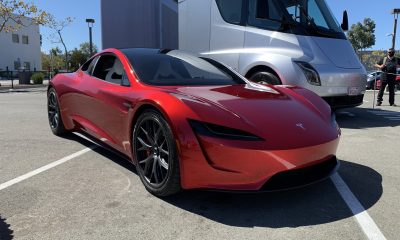
 News1 week ago
News1 week agoTesla updates fans on its plans for the Roadster

